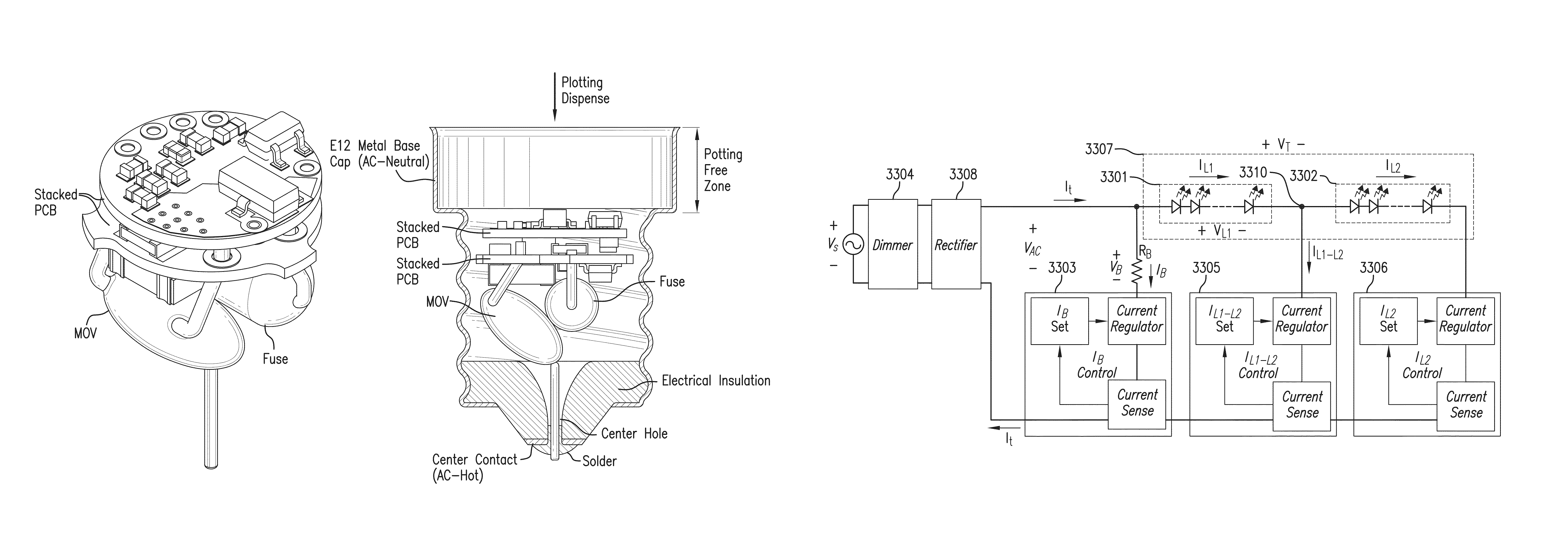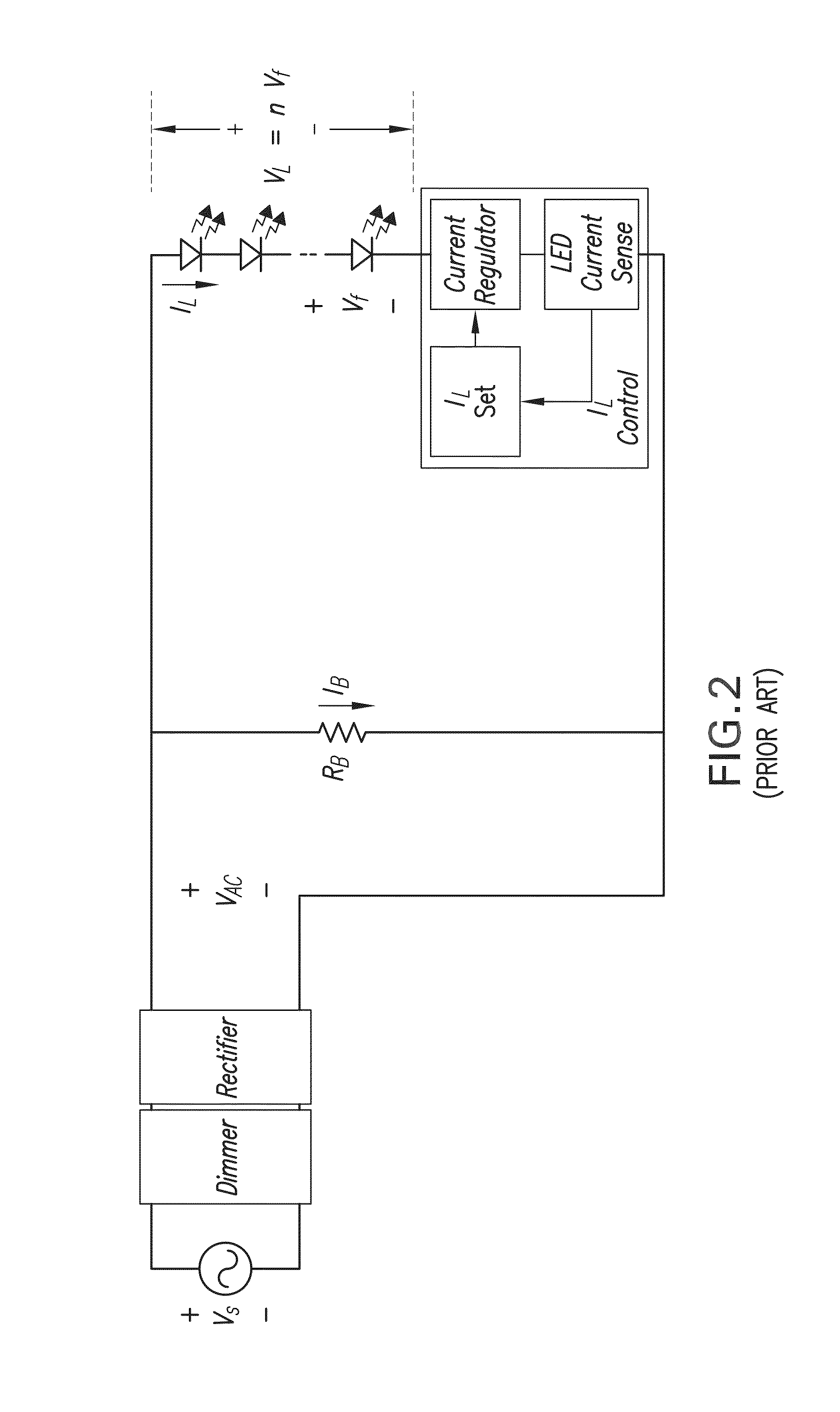LED lighting
a technology of led lighting and led diodes, which is applied in the direction of semiconductor devices for light sources, lighting and heating apparatus, and use of semiconductor lamps. it can solve the problems of poor reliability, low thermal conductivity of implementation, and significant impact on the commercial viability of this product, and achieve the effect of compactness and energy saving
- Summary
- Abstract
- Description
- Claims
- Application Information
AI Technical Summary
Benefits of technology
Problems solved by technology
Method used
Image
Examples
example 1
[0060 of Prior Art Implementation of FIGS. 2-3
[0061]FIG. 2 shows a prior art implementation using a simple resistor RB to provide diversion current. However the diversion current is not constant and varies with the rectified AC line voltage VAC. The resulting current voltage waveforms are shown in FIG. 3.
[0062]To facilitate discussion and aid understanding, the following terms as used herein are described:
[0063]VS Input AC line voltage. Some common input voltage include 100 VAC, 110 VAC, 120 VAC, 230 VAC, 240 VAC, 277 VAC, 12 VAC, 24 VAC, 8 VAC, etc. For the examples in this document, VS=120 VAC @ 50 Hz. Although 50 Hz is used to simplify some exemplary calculations, the principles may be applied to other utility line voltages and frequencies, such as 60 Hz in North America.
[0064]VAC Rectified line voltage VS.
[0065]RB, IB Resistor and current for the bleeder circuit. For example, to set IB to 30 mA when VAC=60V, this requires RB=2000Ω.
[0066]n, Vf n is the number of individual LEDs e...
example 2
[0073 of Prior Art Implementation of FIGS. 4-5
[0074]FIG. 4 shows a prior art improved implementation using a current regulator and a resistor RB in the diversion current path. Efficiency is improved since the bleeder current IB is fixed after VAC reaches a certain value. The resulting current voltage waveforms are shown in FIG. 5.
[0075]In this example, bleeder circuit current is regulated to a constant value of IB=30 mA, once VAC>IB·RB or VAC>60V.
[0076]One implementation of such IB regulation circuit would be a linear regulator. The efficiency of such a circuit increases from 21% to 42%.
[0077]The table below shows examples of the maximum required triac hold up currents for a population of commercially available triacs, whether they are used in a lamp dimming system or not, from the Mouser Online website. As can be seen, small hold up currents, e.g., IHH>12 mA is desired for some minimum level compatibility. From actual testing, IH>15 mA may be, for some implementations, a minimum pr...
PUM
 Login to View More
Login to View More Abstract
Description
Claims
Application Information
 Login to View More
Login to View More - R&D
- Intellectual Property
- Life Sciences
- Materials
- Tech Scout
- Unparalleled Data Quality
- Higher Quality Content
- 60% Fewer Hallucinations
Browse by: Latest US Patents, China's latest patents, Technical Efficacy Thesaurus, Application Domain, Technology Topic, Popular Technical Reports.
© 2025 PatSnap. All rights reserved.Legal|Privacy policy|Modern Slavery Act Transparency Statement|Sitemap|About US| Contact US: help@patsnap.com



